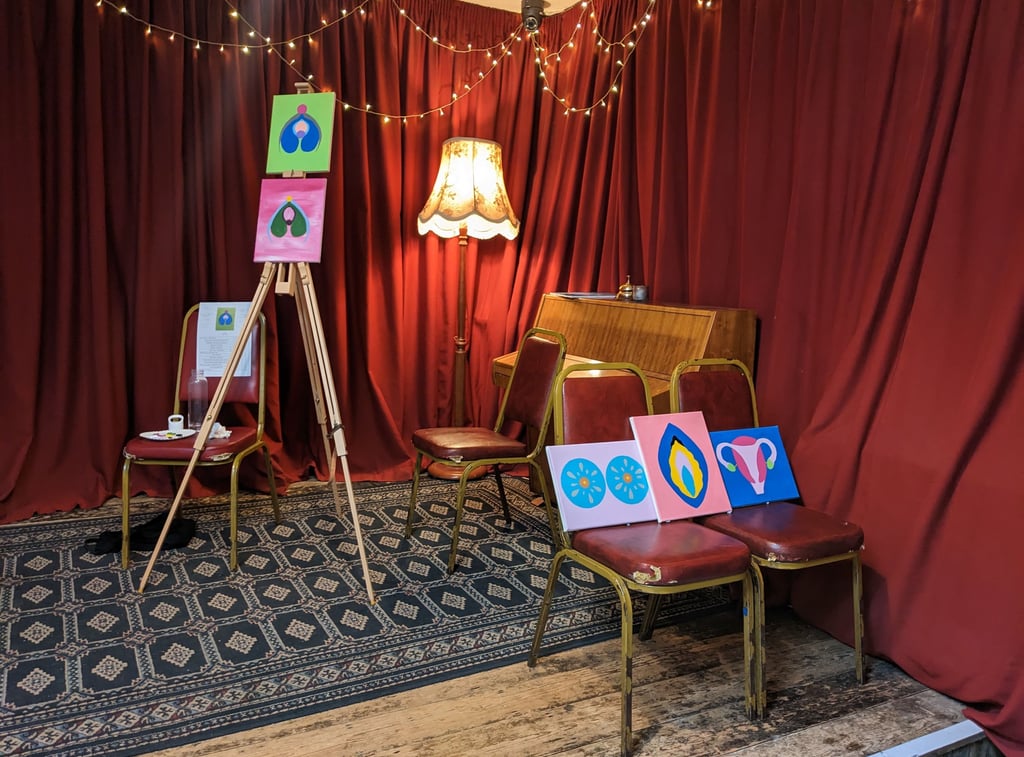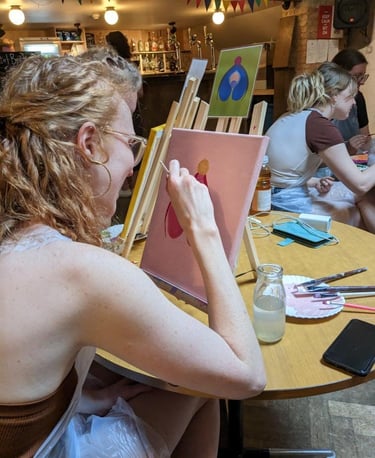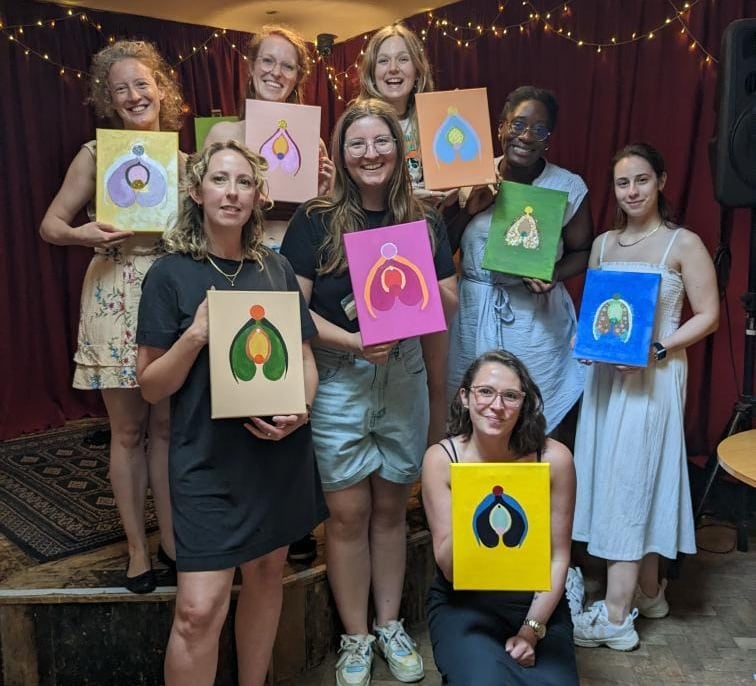How I came up with the idea of painting vulvas during focus groups
A feminist paint along by artist Geet Lush inspired me to use painting as part of my focus group discussions.
Hannelore Van Bavel
3/1/20243 min read


How I came up with the idea of painting vulvas during focus group discussions
In 2023, while I was still living in Bristol, I stumbled across a “feminist paint-along” event by the artist GeetLush (check out her brilliant work here). Intrigued, I invited my friend Fanny to join me. On a sunny Saturday afternoon, we found ourselves walking into the Bristol Improv Theatre. The room was cozily lit, with a little stage framed by red velvet curtains. We grabbed gin and tonics and joined a table already set up with paints, brushes, and easels. There was a little step-by-step guide waiting for us, showing how to paint an abstract, colourful clitoris.
When everyone had settled, Karen, the artist, began guiding us step by step through the process of painting the clitoris. The room was alive with chatter as we compared colour choices, commented on how long it had been since we last painted, and exchanged compliments on each other’s work.
But very soon, the conversation turned more personal. When Karen mentioned we’d next be painting the “vestibule,” most of us looked around in confusion. (“The vestibule” refers to the area within the vulva just inside the labia minora, for those wondering!) This sparked a discussion about how little most of us knew about our own anatomy. One person mentioned how odd it was that we can name every part of the penis—even structures like the corpora cavernosa—but struggle to name the parts of our own bodies.


Someone shared that she had been self-conscious about the length of her labia for years, only recently discovering through the Vulva Gallery on Instagram that her anatomy was completely normal. Another participant chimed in, admitting that she’d felt insecure about being asymmetrical “down there.” For the longest time, she’d even believed this was caused by masturbating too much as a teenager.
What followed was a mix of empathy, shared understanding, and laughter. We bonded over our collective experiences of growing up knowing so little about our own bodies and the insecurities that ignorance had bred.
I found it remarkable how easily a group of strangers began discussing such personal topics. From my perspective, the painting itself played a huge role. Having something to focus on—rather than having to maintain constant eye contact—made it easier to share openly. It also created a space where not everyone felt pressured to participate verbally; those who didn’t want to speak could simply immerse themselves in their artwork without feeling awkward.
Inspiration for My Research
This experience inspired me to use painting as a technique during my focus groups. It struck me as the perfect icebreaker: a fun, creative activity that encouraged conversation without forcing participants into direct confrontation. It also gave people the freedom to stay silent or decline to answer certain questions while still actively engaging in the process.
Karen’s portfolio includes four designs: the clitoris (the one I painted that sunny day in Bristol), a womb, breasts, and a vulva. I chose the vulva design for my research, reasoning that painting its different parts might naturally spark conversations about the anatomy and emotions associated with them—and I was right!


